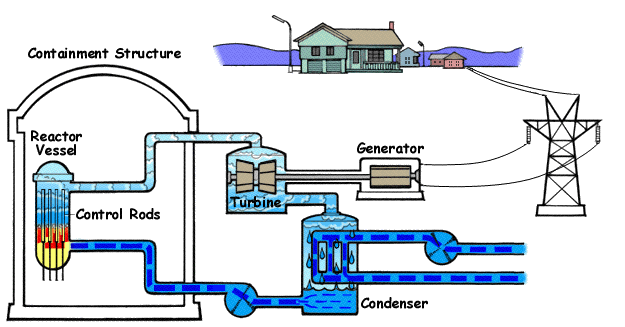7.5: United States Commercial Nuclear Power Reactors
- Page ID
- 204217
Location Commercial Reactors
In 2017, there were ninety-nine working nuclear reactors in the United States. The majority of these reactors are on the eastern side of the country. Each reactor site houses between one and three reactors. The average age of these nuclear reactors is approximately thirty-six years. Each year, reactor units are rigorously inspected for safety. Also, reactors that cannot meet safety measures or are not able to be upgraded will be placed on shut-down. These reactors will eventually be closed forever or decommissioned.

Two Types of United States Commercial Reactors
In the United States, commercial reactors can be one of two types. Sixty-five reactors are pressurized water reactors (or PWRs). This type of reactor uses light water as a moderator and a coolant. The water in the reactor is kept under high pressures. This type of configuration does not allow water to boil. The water inside the reactor transfers its heat to the water in a steam generator. Then, steam is produced to aid in the production of electrical energy.

The other thirty-four commercial reactors are boiling water reactors (BWRs). These reactors also use light water as their moderator and coolant. Here, the water in the reactor is allowed to boil. This heated water goes directly to the turbine house which is separated from a generator. The radioactive water that goes through the turbine is contained inside the nuclear facility. Cooling this water with a condenser allows it to be returned into the reactor and used for coolant once again.


